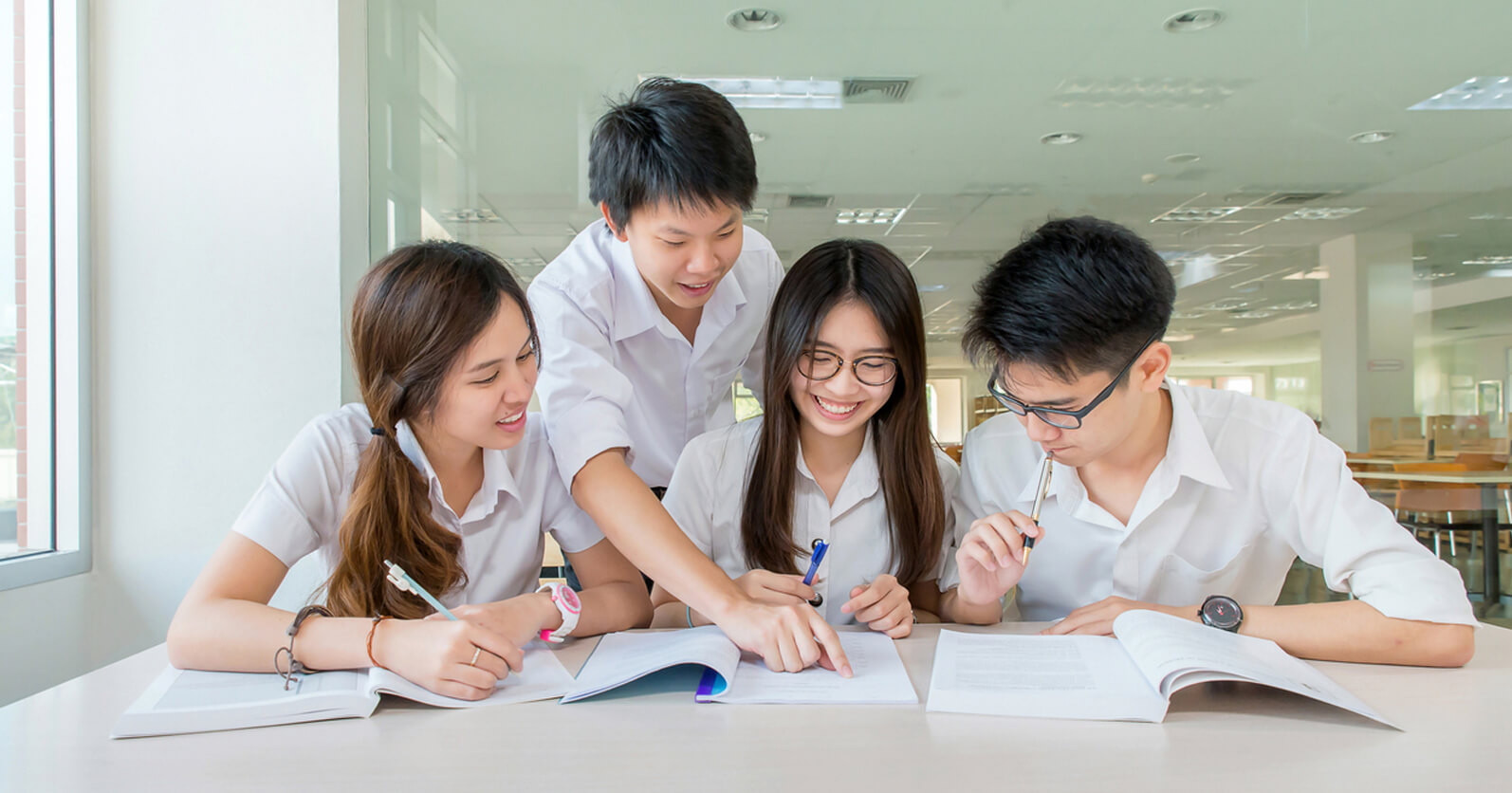
A guide to the education system in the Philippines
Education is vital in almost every part of the world. Though every country has its education system, most nations would have a similar concept or equivalent qualification. The education system in the Philippines is different as it adopted a combination of influences from its colonial history.
The education system in the Philippines has been greatly influenced by the colonisation of Malaysia, China, Spain and America. However, much of the country’s current schooling system follows American educational practices. To give you a better understanding of the topic, we’ve laid out a guide below.
Understanding the Philippine education system

In the Philippines, a thirteen-year education is mandatory by law. These thirteen years run from kindergarten up to grade 12, also known as the K-12 programme. After which, students have the option of whether to pursue higher education or not.
Three government agencies manage the different levels of education in the Philippines.
- The Department of Education (DepEd) sets the standards and implements standardised tests for public schools throughout K-12. Meanwhile, private schools tend to have more freedom in developing their curricula as long as they adhere to DepEd’s existing laws.
- The Commission on Higher Education (CHED) oversees higher education institutions, such as colleges and universities.
- The Technical Education and Skills Development Authority (TESDA) regulates the Technical and Vocational Education and Training (TVET) programmes.
The medium of instruction in the Philippines is English and Filipino. However, since the Philippines is an archipelago made up of over 7,000 islands, there are also over 100 languages used across the country. To make it easier for younger children, different provinces then use the local languages in primary school. Afterwards, the language of instruction used is primarily English, especially in more urban areas.
In the Philippines, the academic year usually commences in June and ends in March or April.
Philippine education structure

For a long time, the education system in the Philippines was one of the shortest in the world. Back then, formal education was only required for 10 years (6 years of primary school and 4 years of high school).
In 2012, the government introduced new legislation requiring students to attend school from kindergarten (around age 5) to grade 12 (around age 18). This meant that the new legislation added 2 years to the curriculum before students could finish high school. Since then, the education system in the Philippines became more similar to American K-12 schooling.
K-12 in the Philippines has 3 levels:
- Primary School (Primary Education) – K to 6
- Junior High School (Lower Secondary Education) – 7 to 10
- Senior High School (Upper Secondary Education) – 11 to 12
After which, students have the option to pursue Higher Education. This includes a Bachelor’s degree, Master’s degree, Doctor of Medicine, Juris Doctor and PhD.
Primary Education
Generally, the duration of primary school in the Philippines is about six years, and it is divided into two cycles:
- Primary cycle (4 years): Grades 1 to 4
- Intermediate cycle (2 years): Grades 5 to 6
This type of curriculum is mandatory in public schools. However, private schools usually offer a 7-year curriculum instead of 6, so children attend school a year earlier.
At the end of every school year, the student’s cumulative grades are evaluated. If the students pass or earn at least 75%, they can move forward to the next year level.
After completing six years of primary school, the students graduate and earn a diploma from the institution. After earning this diploma, they can move onto secondary education.
Secondary Education
Secondary education in the Philippines is also known as high school, and it consists of two levels:
- Lower Secondary Education (Junior High school): Grades 7 to 10
- Upper Secondary Education (Senior High school): Grades 11 to 12
There are different types of junior high school in the Philippines:
- General secondary school: Consists of four levels mainly based on the American curriculum.
- Vocational secondary school: Technical and vocational education programme offered by the government and private institutions.
- *Science secondary schools: Research-orientated and specialised public high school for students with demonstrated maths and sciences skills.
In the new education system in the Philippines, the curriculum gained two additional years, now referred to as Senior High School. It is now compulsory for students to attend Senior High School, wherein the courses have two division:
- Core curriculum subjects: Consists of 8 learning areas made up of 15 core courses.
- Track subjects: Further divided into Applied Subjects and Specialisation Subjects. There are 7 Applied Subjects and 9 Specialisation Subjects.
By finishing Senior High School, students graduate equipped with knowledge and skills necessary for Higher Education or employment.
Higher Education
After finishing the mandatory K-12 programme, students in the Philippines have the option to pursue Higher Education. There are over 2,000 Higher Education Institutions (HEIs) in the Philippines, with over 3,000,000 students enrolled in the courses (SY 2019-2020).
There are different classifications of HEIs in the Philippines:
- College or university
- Colleges typically offer specialised courses (e.g. Hotel & Restaurant Management, Nursing, Information Technology).
- Universities must meet stringent requirements (e.g. 6 undergraduate courses consisting of a 4-year liberal arts course, 4-year science and mathematics course, 4-year social sciences course, at least 3 courses that lead to government licensure, and; 2 graduate-level courses leading to a PhD).
- Public or private
- Public colleges and universities are non-sectarian entities publicly funded by the government.
- Private colleges and universities can either be sectarian or non-sectarian, non-profit or for-profit and are privately managed and funded.
- Secular or religious
- Universities in the Philippines can also either be associated with a religious group or not.
Higher Education in the Philippines is then divided into three phases:
- Undergraduate (Bachelor’s Degree)
- Postgraduate (Master’s Degree)
- Doctoral (PhD)
Cost of education

Public schools and universities in the Philippines are often free or only come with minimal fees. However, many Filipino parents and ex-pats choose to send their kids to private schools for better education quality.
Compared to public schools, children in private schools tend to get a more personal learning experience. On average, the teacher-student ratio in private schools is only 1:40 at most, making it easier for the teachers to supervise the students. And unlike public schools, private schools offer a more diverse curriculum, and they use independent resources.
Because of these additional benefits, the tuition fees in Philippine private schools can be quite costly. Here’s a rundown on the average annual tuition fees for every education level:
- Primary school: ₱70,000 to ₱200,000
- High school: ₱100,000 to ₱250,000
- Higher education: ₱110,000+
Educational support in the Philippines

Parents and guardians often only want what’s best for their beloved children. Regardless of the cost, sending their kids and relatives to a great school is just one of the many goals Filipinos aspire to accomplish. This is also true for overseas Filipino workers (OFWs) and residents.
Paying for tuition fees is already a big responsibility enough as it is. If you’re an overseas Filipino and send family and relatives to school in the Philippines, find the best money transfer provider that helps you get the most value out of every transfer with maximum safety.
With Kabayan Remit, you can continue supporting your children, nieces, nephews in the Philippines even if you’re in the UK. Here’s how we can help you support your loved ones’ education:
- Send the most value: We offer high exchange rates and competitive fees, so you can send more and pay less.
- Send money with peace of mind: We use the same encryption and physical security as banks and ensure strict compliance policies.
- Transfer funds instantly: We aim to deliver your hard-earned money within an hour.
If you need assistance with your transfer, you can get in touch with our 24/7 customer support team.
